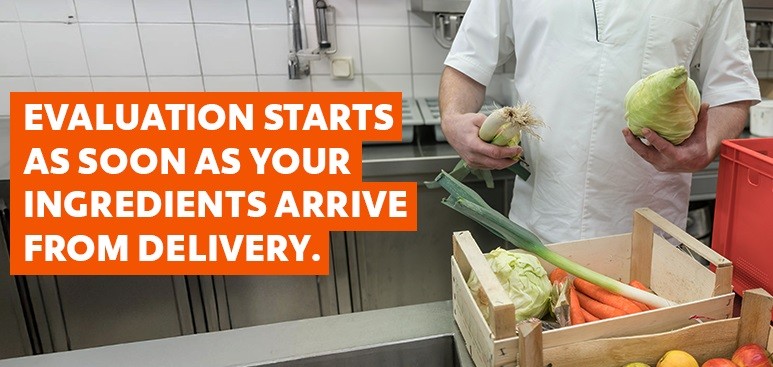Method of Evaluating Dishes to Guarantee Food Quality
Establish a method for evaluating dishes in your business. This thorough evaluation is key to ensuring your food's quality.
Establishing a reliable method for evaluating dishes is vital for the success of any food business. No matter the size of your restaurant, a system for monitoring food quality is nonnegotiable. Consistency is the foundation of building a reputation and earning your diners’ trust. Since food is your core offering, anything less than top-quality can lead to customer dissatisfaction and loss of business.
What Is Food Evaluation?

Food evaluation involves the systematic analysis of food products, ingredients, and menu items to assess their specific properties and overall quality. This process examines various sensorial aspects, including taste, texture, appearance, aroma, and temperature. It also considers nutritional value and food safety to ensure your restaurant meets industry standards.
Evaluating food follows a meticulous, step-by-step method of inspecting, testing, and measuring the quality of every dish. This thorough process guarantees that each item leaving your kitchen maintains consistency, delights customers, and encourages repeat business.
The Importance of Evaluating Dishes
Implementing a thorough evaluation process offers several benefits:
- Confirms that each item aligns with your restaurant’s quality expectations.
- Helps detect any inconsistencies in food quality early on.
- Reveals opportunities for recipe development and enhancement.
- Ensures that dishes are not only delicious but also visually appealing.
- Identifies training needs within the kitchen team.
- Improves customer satisfaction and loyalty.
Who Conducts Food Evaluations

Food evaluations are a collaborative effort involving various team members. The individuals who play a role in the process include the following:
- Head chef (lead)
- Sous chef
- Line cook
- Quality control staff
- Front-of-house team
- External food consultants
When to Evaluate Food

Evaluating dishes at specific stages of your operations is essential for maintaining a high-quality menu. Here are the critical moments when you should assess your food:
- Check food during development to refine recipes and achieve optimal flavors before adding them to the menu.
- Assess the dish again at launch to ensure it meets quality expectations and that staff competency is in place for consistent preparation.
- Conduct regular evaluations during operations to monitor ongoing quality and consistency based on customer feedback.
How to Rate Food

There are many ways of evaluating menu items. However, the most practical method is to assess the characteristics of food as perceived by the five senses – appearance, aroma, taste, texture, and consistency. These five factors serve as the criteria for food tasting that will guide you in checking the quality of dishes.
When planning and developing a menu item, establish clear standards and expectations from the outset. Throughout the preparation process, consistently evaluate each dish to ensure it matches those benchmarks. Use the following guidelines to set effective expectations:
- Appearance: Evaluate color combinations, ingredients sizes, visual appeal, and signs of freshness.
- Aroma: Identify distinct scents like tangy, herbal, or earthy notes.
- Taste: Assess the balance of sweet, sour, bitter, salty, and umami flavors.
- Texture and consistency: Examine how the dish feels – smooth, crunchy, tender, etc. – using fingers, tongue, or palate.
- Temperature: Ensure the dish is served at the correct temperature, whether hot, cold, or room temperature
Method of Evaluating Dishes
- For appearance, taste, and texture evaluations, place samples in clean, uncontaminated containers and assign codes when evaluating more than one sample.
- Use separate food samples for each evaluator.
- When evaluating aroma, place the sample at least 1 inch from the nose.
- When evaluating taste, bite off a small portion of the sample and chew slowly.
- When evaluating more than one dish, spit out the sample after tasting and rinse the mouth with tap water.
- For comparison and ranking purposes, 10 seconds is acceptable for easy recall of the tastes.
- For a single panelist who has to taste several samples, allocate 2 minutes of rest in between to prevent fatigue.
- To evaluate liquids, take a small sip of the sample and swirl it around the tongue before spitting it out.
- When evaluating more than one sample of liquids, rest for 1 minute between samples.
Recap and Summary
Maintaining food quality is integral to running your business. When evaluating the dishes on your menu, consider the following factors as well:
- Your customer profile
- Production and service capabilities
- Availability of ingredients
- Food costs
After evaluating the dishes on your menu, review their production processes and cost-effectiveness. Save a copy of this recipe costing template for guidance. Remember, your customers may have preferences that differ from yours, so it’s beneficial to consider their perspectives. Involve them in your assessment methods to gain valuable insights and enhance your offerings.
Related Articles
What you'll get:
- Access to free Chef trainings
- The best recipes and tips from Chefs around the world
- The latest culinary trends